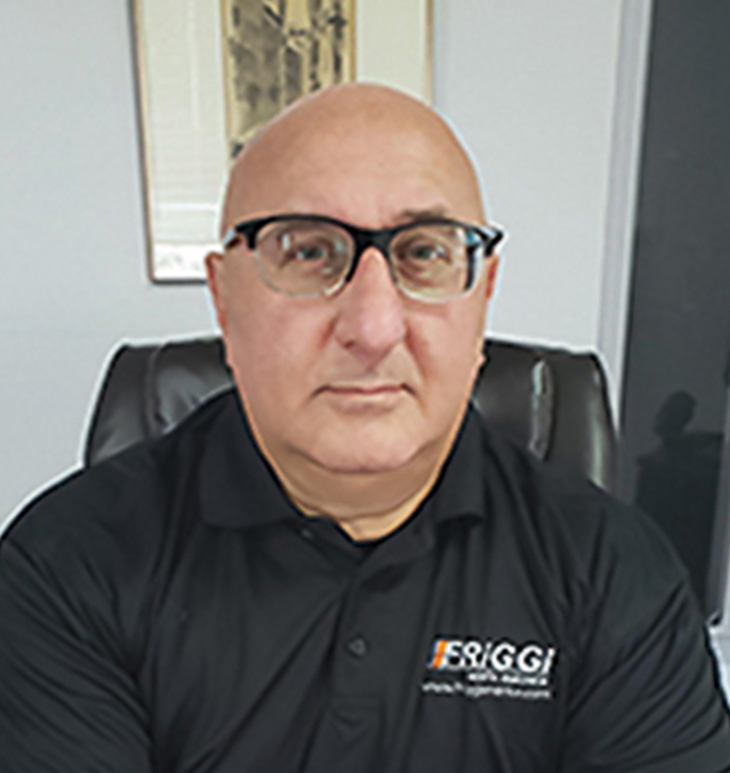
hat are the first thoughts that come to mind about the word “band saw”? If you are like most people, you think of up and down, left and right, horizontal and vertical machines. But that’s the funny thing about time and progress—things change rapidly.
Today’s machines have become much more sophisticated, thanks in part to the Internet of Things. These advancements allow more sophistication and an ability to download work to machines from a central ERP system, as well as inventory monitoring. IoT also permits supervisors to monitor saw activity and productivity from mobile devices.
But perhaps the biggest change has come with the advent of a new series of saws that allow almost near-net shaping for various industry sectors. Take the new Radius series of vertical machines offered by Friggi. These machines are capable of cutting a variety of radii and angles and even some shapes. This ability ensures that at the start of a part, the most basic, and usually most cost-effective machine, renders a near-net shape prior to going to a more sophisticated and costly milling operation.
Imagine the savings from using milling machines for finish work, rather than hogging out chips from a traditional square or rectangular piece of material. The time saved is substantial and there is a tremendous saving in chip management from the milling machine.
The more work that one can perform on a band saw, the more the savings increase in downstream processing. Not to mention the considerable savings in material handling. Remember that there is cost and time involved every time someone has to touch the part. By having band saws that can do more than strips or horizontal cuts, finishing time and material handling are reduced. Consider the Friggi large Gantry machine that can be configured both for steel and high-speed versions for aluminum. Available with these machines are rotating tables that allow several cuts without anyone having to touch the metal. The engineering that goes into the new generation of band saws is incredible.
Blade technology is critical to making advanced cutting performance possible. A few of the latest blade innovations include thin-kerf blades. New generations of thin-kerf blades make it possible to cut faster and reduce the amount of chip production. Therefore, more out the door and less in the scrap bin.
These new blades coupled to new high-speed carbide band saw machines, like Friggi’s HSS line, result in cutting rates that were previously only within the domain of large circular saws. These machines have blade speeds approaching 1,000 feet per minute.
That’s just a small part of what makes these particular machines perform at such high cutting rates. The structure and components are all built strong. This is necessary to reduce vibrations to an absolute minimum. These include high-efficiency DC motors, specialized ball-screw feed, large wheels, heavier hydraulically activated guides, dual blade brushes and high-pressure coolant delivery.
All of this, combined with the blade technology, can achieve cutting rates as much as 10 times higher than traditional band saw cutting.
Another notable advancement is the coating that manufacturers are applying to the teeth and backing of these specialty carbide blades. Although they cut at significantly higher feed rates, coated blades have an increased life because they transfer heat to the chips. A real-life example of this superior cutting performance with the coated thin kerf blade comes from a recent cutting trial with a titanium grade Ti 64, 14.56-inch-diameter bar. Cuts were done in less than 7.5 minutes per cut. Blade speed was recorded at 450 feet per minute and a feed rate of 2 inches per minute; approximately 22 square inches per minute. The harmony between a technologically advanced saw and blade combine to extract exceptional results.
For the high-volume producer or for service centers, band saws can be configured with sophisticated infeed and outfeed handling to make processes more streamlined and automated. Machines can be loaded for continuous operation and work lights out. Outfeed handling can be configured to sort cuts and to discard scrap. Specialized handling can even be incorporated with robot arms to stack and place on a continuous basis. Monitoring of the whole system can be done via mobile devices or centralized ERP systems. Just think if we have come this far with sawing, what will the future hold?